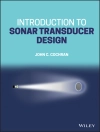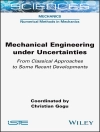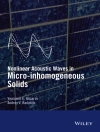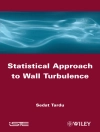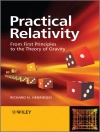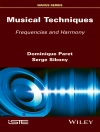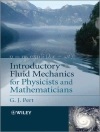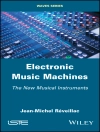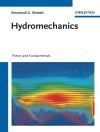Acoustics of Fluid Media 1 is intended for undergraduate students and engineering students, as well as graduate students and professionals in the industry who are increasingly faced with the need to consider acoustic constraints in the design of new products.
The physical principles and theoretical foundations of acoustics in fluids are first developed, including reflection and refraction of plane and spherical waves. The book then introduces notions of signal processing applied to sound waves, followed by radiation from surface or volume acoustic sources and the use of Green’s functions, as well as the description of diffraction and scattering phenomena. The final chapters are devoted to sound propagation in ducts and room acoustics.
Each chapter is accompanied by a limited number of exercises, ranging from the simple application of formulas to problems requiring a more advanced theoretical analysis or a numerical solution. Throughout the book, the theoretical results are illustrated with numerous figures obtained from measurements or numerical simulations resulting from the evaluation of complex formulas or from the use of a finite element solver.
Spis treści
List of Abbreviations, Acronyms and Symbols xi
Preface xv
Chapter 1 Equations of Linear Acoustics 1
1.1. Validity of the assumptions of linear acoustics and a perfect fluid 1
1.2. Linearized equations of fluid dynamics 3
1.3. The wave equation 5
1.3.1. The special case of ideal gases 6
1.3.2. The velocity potential 7
1.3.3. Validity conditions for the linearization of equations 8
1.4. Acoustic energy, acoustic intensity and source power 9
1.4.1. Definition of acoustic energy and acoustic intensity 9
1.4.2. Acoustic sources 10
1.5. Harmonic waves 12
1.5.1. Definition of harmonic waves 12
1.5.2. Average acoustic energy and acoustic intensity 15
1.6. Boundary conditions 16
1.6.1. Fluid–solid and fluid–fluid interfaces 16
1.6.2. Specific acoustic impedance 18
1.7. Exercises 19
Chapter 2 Plane Waves and Spherical Waves 21
2.1. Plane waves 21
2.1.1. Plane waves in the time domain 21
2.1.2. Harmonic plane waves 25
2.1.3. Evanescent plane waves 28
2.1.4. Angular spectrum of plane waves 28
2.1.5. Near-field acoustic holography 29
2.2. Spherical waves 31
2.2.1. Time-averaged intensity and power 33
2.2.2. Harmonic spherical waves 34
2.3. Cylindrical waves 36
2.4. Exercises 37
Chapter 3 Sound Levels, Spectral Analysis and Notions on Human Sound Perception 43
3.1. Energy and average power 44
3.2. Sound levels 45
3.3. Energy and power spectral densities 46
3.4. Correlation functions 47
3.5. Random signals 48
3.6. Random signals and correlations, some examples 50
3.7. Frequency bands 52
3.8. Loudness, equal loudness contours and frequency weightings 55
3.9. Characterization of non-stationary acoustic signals 58
3.9.1. Statistical levels 59
3.9.2. Equivalent level, “Day ”, “Evening” and “Night” levels 60
3.9.3. Transient signals: sound exposure level and energy spectral density 61
3.10. Exercises 63
Chapter 4 Reflection and Transmission Phenomena 67
4.1. Reflection and transmission of normally incident plane waves 68
4.2. Reflection of a harmonic plane wave on an impedance surface 69
4.3. Multilayer media 72
4.3.1. Impedance transfer 72
4.3.2. Transmission through three media 73
4.3.3. Transmission of a harmonic plane wave through a thin wall 74
4.4. Reflection and transmission of plane waves at the interface between two fluids: oblique incidence 76
4.5. Plane wave transmission through a thin wall: oblique incidence 81
4.6. Piston-tube coupling 85
4.7. Reflection of spherical waves and image sources 87
4.8. Exercises 92
Chapter 5 Sound Sources and Green’s Functions 97
5.1. Volume sources 98
5.2. Green’s functions for the wave equation 99
5.3. General solution of the wave equation in free-space 100
5.3.1. Monopole sources: far-field and compact source region 101
5.3.2. Dipole sources 104
5.3.3. Quadrupole sources 107
5.4. Green’s functions and general solutions of the Helmholtz equation 108
5.4.1. Monopole sources 109
5.4.2. Dipole and quadrupole sources 110
5.5. One-dimensional and two-dimensional Green’s functions 111
5.5.1. Two-dimensional Green’s function of the wave equation 111
5.5.2. One-dimensional Green’s function of the wave equation 113
5.5.3. Green’s functions of the Helmholtz equation in one- and two-dimensions 113
5.6. Reciprocity of Green’s functions 115
5.7. Green’s functions for a fluid in uniform subsonic motion 116
5.7.1. Green’s function of the convected Helmholtz equation 119
5.8. Moving sources and the Doppler effect 119
5.8.1. Point mass source in arbitrary motion 119
5.8.2. Arbitrarily moving point forces 122
5.8.3. Sources in uniform rectilinear motion 124
5.9. Exercises 126
Chapter 6 Integral Formulations for Sound Radiation and Diffraction 129
6.1. Radially oscillating sphere 130
6.1.1. Harmonic vibrations: radiation impedance 131
6.2. Acoustic radiation from bending vibrations 134
6.2.1. Radiated power and radiation impedance 138
6.2.2. Acoustic radiation from a finite plate 140
6.3. Kirchhoff–Helmholtz integral 141
6.3.1. Irregular frequencies 145
6.3.2. Expressing the surface integral in terms of pressure and velocity 146
6.3.3. Kirchhoff–Helmholtz formula and acoustic field extrapolation 147
6.4. Adapted Green’s functions 148
6.5. Integral formulation associated with the wave equation 149
6.5.1. Bursting balloon 150
6.6. Radiation from planar structures: Rayleigh integral 152
6.6.1. Radiation from a circular piston 155
6.7. Rayleigh integral in the time domain 160
6.8. Exercises 161
Chapter 7 Diffraction and Scattering 163
7.1. Diffraction by a semi-infinite screen 163
7.2. Scattering by a rigid cylinder 169
7.2.1. Scattering cross-sections 173
7.3. Rayleigh scattering by a generic obstacle 177
7.4. Scattering by non-rigid obstacles and the Born approximation 180
7.4.1. Scattering by inhomogeneities 180
7.4.2. The Born approximation 183
7.4.3. Validity of the Born approximation 185
7.5. Exercises 186
Chapter 8 Guided Waves 189
8.1. Sound propagation in a duct of constant cross-section 189
8.1.1. Propagating modes and evanescent modes 191
8.2. Duct of rectangular cross-section 192
8.2.1. Phase and group velocities: dispersion of higher modes 193
8.2.2. Modes and pairs of plane waves 195
8.3. Ducts of circular cross-section 196
8.4. Point source in a duct and Green’s function 198
8.5. Propagation in a duct with absorbing walls 201
8.6. Influence of a uniform flow on modal propagation 204
8.7. Exercises 208
Chapter 9 One-dimensional Propagation in Ducts 211
9.1. Ducts of piecewise constant cross-section: transfer matrices 211
9.1.1. Impedance transfer 212
9.1.2. Cross-sectional area discontinuities 212
9.1.3. Expansion chambers 215
9.1.4. Bifurcations and acoustic filters 217
9.1.5. Transmission loss and insertion loss 220
9.1.6. End corrections 221
9.1.7. Helmholtz resonators 222
9.2. Webster horn equation 226
9.2.1. Propagation in ducts with a slowly varying cross-section 226
9.2.2. Horn families: exponential horns 227
9.3. Exercises 231
Chapter 10 Acoustics of Enclosures: Room Acoustics 233
10.1. Simple-shaped cavities 234
10.2. Modal approach 235
10.2.1. Distribution of the natural frequencies 238
10.2.2. Room acoustic response to a point source 240
10.3. Energy approach: Sabine’s theory 241
10.3.1. Global energy balance 242
10.3.2. Diffuse field 242
10.3.3. Steady-state level: reverberation time 244
10.3.4. Eyring’s formula 246
10.4. Influence of the atmospheric absorption 247
10.5. Random incidence absorption coefficient 247
10.6. Schröder frequency 248
10.7. Room critical distance 249
10.8. Coupled rooms: transmission loss of a panel 250
10.9. Measurements in the reverberation room of École Centrale de Lyon 251
10.10. Geometric room acoustics 253
10.11. Subjective effects 256
10.12. Exercises 261
Appendices 267
Appendix 1 Basic Fluid Mechanics and Thermodynamics 269
Appendix 2 Math Refresher 281
References 293
Index 297
O autorze
Daniel Juvé is an Emeritus Professor at the École Centrale de Lyon, France, in the Fluid Mechanics and Acoustics Laboratory. His main research interests are noise generation by turbulent flows and sound propagation in the atmosphere.
Marie-Annick Galland is an Emeritus Professor at the École Centrale de Lyon, France, in the Fluid Mechanics and Acoustics Laboratory. She conducts research in noise control using active control systems and/or passive acoustic materials with an application to aircraft’s nacelle liners.
Vincent Clair is an Assistant Professor at the École Centrale de Lyon, France, in the Fluid Mechanics and Acoustics Laboratory. He specializes in the numerical simulation of turbomachinery noise and acoustic propagation through turbulent flows.


